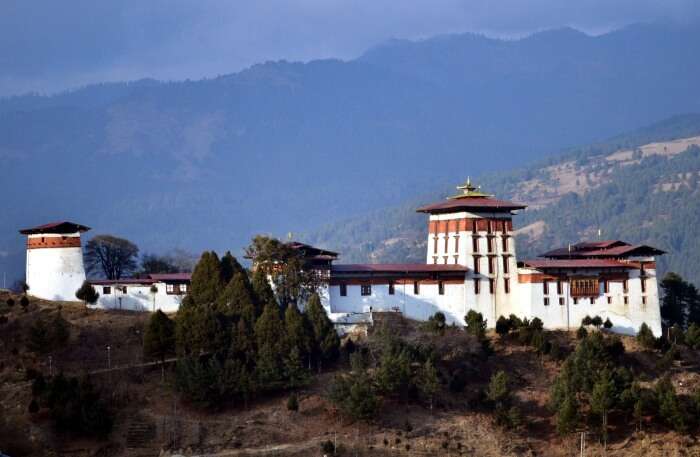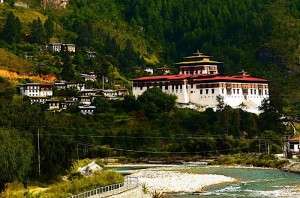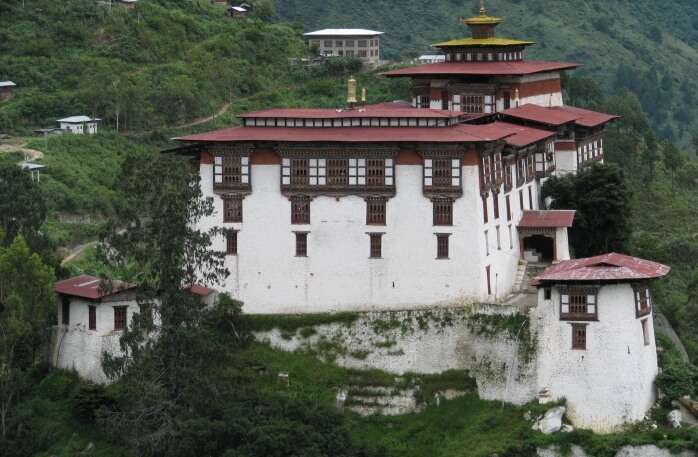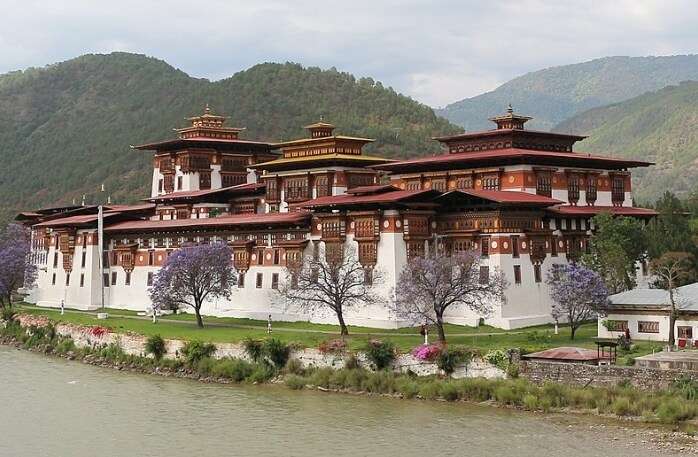The Timeless Architecture of Bhutan: A Testament to Cultural Heritage and Craftsmanship
Bhutan, the land of the thunder dragon, is renowned for its unique and distinctive architecture. This Himalayan kingdom boasts a vibrant architectural landscape that balances tradition with practicality, reflecting a rich tapestry of cultural and religious heritage. The history of Bhutan’s architecture dates back to the 12th century and has remained remarkably consistent over time, maintaining its authentic charm and distinctiveness.
The Historical Roots of Bhutanese Architecture
Bhutan’s architectural history is steeped in spirituality and practicality. The first recorded buildings in the nation were the temples of Lhakhang Karpo and Nagpo in Haa, Kyichu near Paro, and Jampa, Koebnchog-sum and Gayney. These structures laid the foundation for the evolution of Bhutanese architecture, intertwining it with the country’s deep-rooted Buddhist beliefs.
The most iconic feature of Bhutanese architecture is arguably the Dzongs, large fortresses that originated in the 12th century. These structures were constructed on mountaintops, serving as watchtowers and fortresses during wars1. Over the centuries, they transformed into religious and administrative centers, reflecting Bhutan’s blend of spiritual and secular governance.
The Craft of Bhutanese Architecture
Bhutanese architecture is characterized by its harmony with nature and the use of locally sourced materials such as stone, timber, and rammed earth. This respect for the environment is apparent in every structure, from grand Dzongs to everyday households, resulting in an architectural style that seamlessly blends with its natural surroundings.
Interestingly, traditional Bhutanese architecture does not involve the use of architectural plans. This absence of blueprints speaks volumes about the inherent craftsmanship of Bhutanese builders, who rely on their skills and experience to construct these intricate structures.
The Cultural Significance and Influence of Bhutanese Architecture
The architecture in Bhutan is not merely about creating buildings; it’s a cultural manifestation that encodes the country’s spiritual beliefs, values, and history. From palaces constructed between the 13th and 17th centuries[^8^] to modern-day structures, every building is a cultural monument that contributes to the preservation of Bhutanese heritage.
Moreover, Bhutanese architecture plays a crucial role in the country’s tourism industry. The grand Dzongs, majestic palaces, and traditional Bhutanese houses attract visitors from around the globe, offering them a glimpse into Bhutan’s rich cultural heritage.
Architecture in Bhutan: 5 Famous Dzongs
The architectural charm of Bhutan in Northeast India exudes a timeless allure. Vibrant wooden doors, quaint windows, and gracefully sloping roofs are iconic hallmarks of Bhutanese architecture. Discover the allure of 5 famous Dzongs in this captivating read.
1. Jakar Dzong

The Jakar Dzong, also known as “The Fortress of the White Bird”, is an iconic fortress situated on a ridge above Jakar town in the Chamkhar valley of Bumthang, Bhutan. It’s one of the most impressive dzongs (fortresses) in the country, reflecting the unique and timeless architecture of Bhutan.
Established in 1549 by the Tibetan Lam Nagi Wangchuk, the dzong was originally built as a monastery. It later became the administrative center for the region. The dzong gets its name from a legend that a white bird landed on the spot where the dzong was built, signaling it as an auspicious location.
The Jakar Dzong features a distinctive architectural style, with high fortified walls and a series of temples and administrative buildings within. It is one of the largest dzongs in Bhutan, with a circumference of more than 1,500 meters. Its central tower, known as Utse, is notable for being one of the largest in the country.
Within the dzong, you can find several temples dedicated to the Buddha of the future, Maitreya, and protective deities. The dzong also houses the administrative offices of the Bumthang district and the regional monk body.
Jakar Dzong not only serves as an administrative and religious center but also stands as a symbol of the rich cultural heritage of Bhutan. It attracts numerous visitors each year, who are drawn to its historical significance and architectural grandeur.
Must read: Burning Lake: A Pocket Guide to Enjoying Complete Tranquility in Bhutan’s Religious Destination!
2. Trongsa Dzong

Trongsa Dzong is another important fortress in Bhutan, often considered as the ancestral home of the Royal Family. It’s located in Trongsa (formerly Tongsa), a town in central Bhutan. The name Trongsa means ‘new village’ in Dzongkha.
Built in 1648, Trongsa Dzong is the largest dzong fortress in Bhutan. It was initially established by Chogyal Minjur Tempa, one of the trusted officials of Zhabdrung Ngawang Namgyal, the unifier of Bhutan. Later, it became the seat of power over central and eastern regions. Every King of Bhutan before ascending the throne must first serve as the Trongsa Penlop (Governor).
The dzong is a massive structure with multiple levels, sloping down the contours of the ridge upon which it is built. Its white walls and red roofs are typical of Bhutanese architecture. Inside, there are a series of courtyards, temples, and administrative offices. The dzong also houses a monastic community.
One of the unique features of Trongsa Dzong is its strategic location. It is built on a spur overlooking the Mangde Chhu (river), which gave it control over the east-west traffic during the olden days. This advantageous position is one reason why Trongsa was historically a crucial center of power in Bhutan.
Today, Trongsa Dzong continues to hold historical and cultural significance. It’s a popular tourist attraction, and its exceptional architecture and commanding views make it a must-visit place in Bhutan.
Best 9 Lakes In Norway Are Worth A Visit To Europe
3. Paro Dzong

Paro Dzong, also known as Rinpung Dzong which means “Fortress on a Heap of Jewels”, is a stunning example of Bhutanese architecture, located in the Paro valley. This majestic dzong serves as an important center of both civil and monastic administration.
Built in the 15th century, Paro Dzong was established by Lama Drung Drung Gyal, a local lord. However, it was later reconstructed by Zhabdrung Ngawang Namgyal, the unifier of Bhutan, in 1646, into the structure that you see today.
The dzong is renowned for its large and imposing structure, built on a steep hill above the Paro river. It houses fourteen shrines and chapels, including the temple of the Protector Deity. The dzong’s architecture reflects traditional Bhutanese style with whitewashed walls, ornate wooden windows, and a series of intricate paintings depicting Buddhist lore.
One of the most significant events held at Paro Dzong is the annual Paro Tshechu (festival), during which a large thangka, known as Thongdrol, is displayed for the public. This event attracts both locals and tourists, offering them an opportunity to partake in Bhutan’s rich religious and cultural traditions.
Today, Paro Dzong remains one of the most popular tourist attractions in Bhutan, admired for its historical significance and architectural grandeur, offering breathtaking views of the Paro Valley.
Read suggestions: Backpacking in Bhutan: An exciting experience for all travelers
Go Berserk With Fun At Universal Studios Singapore With These 11 Must-Have Experiences
4. Lhuntse Dzong

Lhuntse Dzong is an important and historic dzong in Bhutan, located in Lhuntse District in the north-eastern part of the country. It’s known for its scenic beauty and sacred religious significance.
The dzong was originally built by Pekar Gyatso in 1654 on the site where Ngagi Wangchuk (the grandfather of Zhabdrung Ngawang Namgyal, who unified Bhutan) meditated in 1552. The dzong was subsequently rebuilt and expanded several times over the centuries.
Lhuntse Dzong is situated high on a ridge overlooking the Kuri Chhu river. Its location offers stunning panoramic views of the surrounding landscapes, making it a popular destination for tourists.
The dzong houses many sacred shrines, and it is the administrative and religious center for the district. Inside, you can find numerous chapels dedicated to various deities. The dzong’s architecture reflects traditional Bhutanese style with impressive stone and wood work.
Interestingly, Lhuntse is notable as being the ancestral home of Bhutan’s royal family. The region is famous for its weavers, and their distinctive textiles are considered some of the best in the country.
Visiting Lhuntse Dzong offers a unique opportunity to immerse oneself in the rich culture and history of Bhutan while enjoying the natural beauty of the area.
Read suggestions: Serene Nordic Retreat: A Cozy Cottages in Finland
5. Punakha Dzong

Punakha Dzong, also known as Pungtang Dechen Phodrang Dzong, meaning “the palace of great happiness or bliss”, is one of the most beautiful and significant structures in Bhutan. Located at the confluence of the Mo Chhu (Mother River) and Pho Chhu (Father River), Punakha Dzong serves as an administrative centre and houses the district Monastic Body.
Constructed by Zhabdrung Ngawang Namgyal in 1637-38, it is the second oldest and second largest dzong in Bhutan. It was the administrative centre and the seat of the Government of Bhutan until 1955, when the capital was moved to Thimphu.
The dzong is notable for its impressive structure with a six-story central tower, whitewashed walls, and intricate woodwork. Inside, it contains many sacred temples and relics. One of the most treasured is the Ranjung Karsapani, a sacred image of Avalokiteshvara (Bodhisattva of compassion) that appeared miraculously from the vertebra of Tsangpa Gyarey, the founder of the Drukpa Lineage.
Punakha Dzong is also famous for its annual Punakha Drubchen and Tshechu festivals which showcase masked dances and cultural traditions, attracting both locals and tourists.
One historical point of note: The dzong was the site of the coronation of Ugyen Wangchuck as the first King of Bhutan in 1907. It has also hosted the royal wedding of the current king, Jigme Khesar Namgyel Wangchuck to Jetsun Pema in 2011.
Conclusion
Bhutan’s architecture is a testament to its enduring cultural identity, reflecting the nation’s spiritual beliefs, natural harmony, and skilled craftsmanship. It stands as a symbol of Bhutan’s commitment to preserving its cultural heritage while embracing modernity with grace. As we appreciate the architectural wonders of this Himalayan kingdom, we also celebrate the timeless tradition and rich cultural tapestry that they represent.
After experiencing the enchanting beauty of Bhutan, it becomes clear – it’s no easy feat to stumble upon another place so exquisitely steeped in art, culture, and spirituality. What truly sets Bhutan apart is the untouched architecture, painstakingly preserved through time, sheltered from external influences. One can’t help but be nourished by the tranquil monasteries nestled amidst nature’s embrace, offering a balm for the soul. Waste no time – secure your tickets to Bhutan and embark on this extraordinary journey.
 Tips Clear – Media Surfer News Tips Clear: Your Daily Dose of Expert Advice
Tips Clear – Media Surfer News Tips Clear: Your Daily Dose of Expert Advice